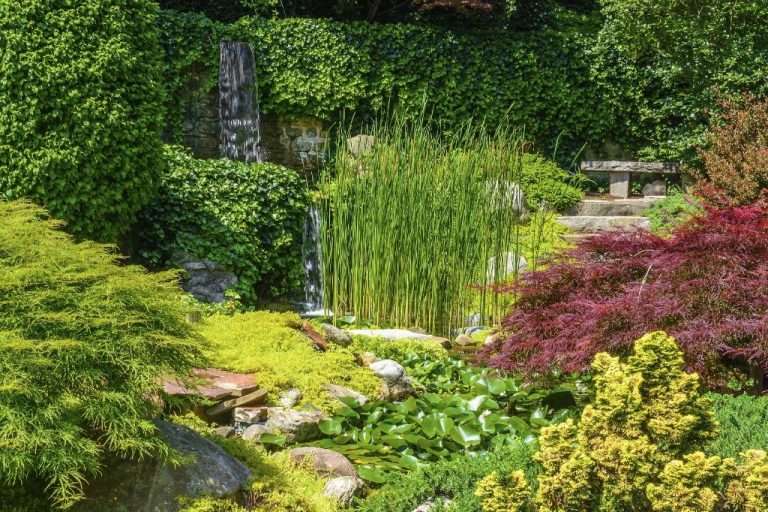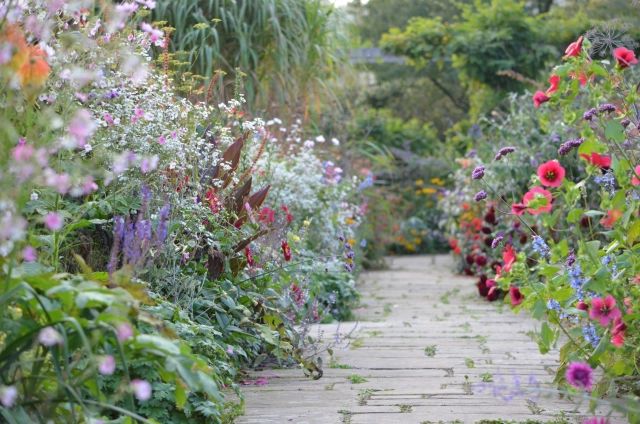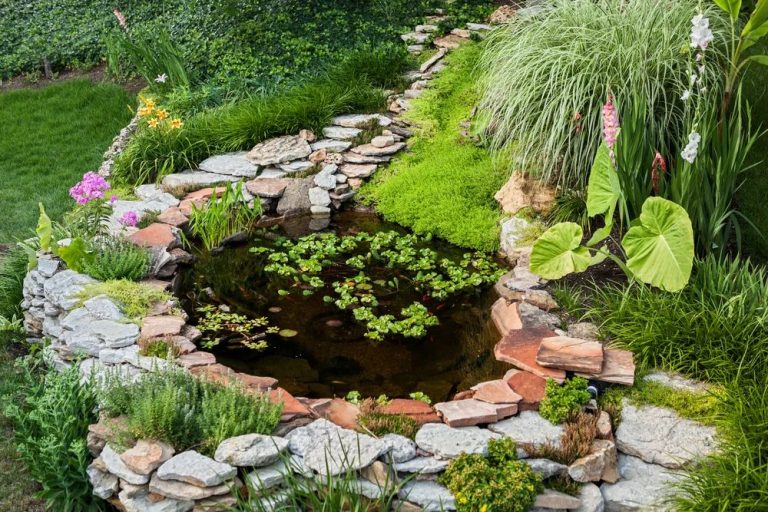Asian-Inspired Garden Design: Zen And Serenity In Your Yard
Asian-inspired garden design refers to landscapes, hardscapes, and plantings influenced by traditional gardens and philosophy from East Asia. While there are many variations, common hallmarks include clean lines, simplicity, natural shapes and materials, water features, and carefully curated plantings. The goal is to create tranquil spaces for relaxation and reflection. Japanese zen gardens and classical Chinese gardens are two major sources of inspiration.
Rather than strictly adhering to traditional forms, Asian-inspired garden design adapts principles to work in a wide range of settings and climates. But the core values remain, like honoring nature, achieving harmony and balance, and promoting peace and serenity. Thoughtful use of rocks, gravel, water, bridges, trees, shrubs, and flowers can bring a slice of Asian sensibilities to backyards and gardens worldwide.
Principles of Asian Garden Design
The principles of traditional Asian garden design emphasize natural forms, asymmetry, and organic elements like water, stones, and plants. Rather than imposing structure and order, Asian gardens highlight the inherent beauty in nature. There is a focus on natural shapes and forms that mimic patterns in the natural world.
Water is an integral element, representing the life force and the concept of yin and yang. Gentle water features like ponds, streams, waterfalls and fountains are common. The water provides soothing sounds and cools the environment. Rocks and stones are also important, symbolizing strength, longevity and timelessness. Large rock formations, boulders and stepping stones are artistic focal points in the garden.
The plants chosen often have poetic names or spiritual meaning. Bamboo, pines, cherry blossoms, maples, and flowering trees like peonies and wisteria are popular choices. The plants and scenery work together to evoke tranquil, meditative feelings and encourage quiet contemplation of nature’s simple elegance.
Asian Garden Design principles emphasize simplicity, tranquility, and celebrating the natural landscape.
Influences from Japanese Gardens
Japanese gardens embody principles of minimalism, contemplation, and seamless transitions between elements. They are designed to evoke a sense of calm, harmony, and tranquility. Simplicity is key – the garden features just enough elements to provide interest and depth without overwhelming the senses.
Rocks, water, bridges, and plants are arranged in careful, asymmetrical compositions to facilitate meditation. There is great attention to detail in Japanese gardens to craft miniaturized replicas of nature. The garden is meant to be slowly savored and contemplated, revealing itself gradually through changing seasons.
Distinct spaces flow seamlessly together through thoughtful design. For example, stone pathways transition smoothly into pebble streams and grassy expanses. Elements are strategically placed to frame views or draw the eye towards focal points like pagodas or cascading waterfalls. Throughout the garden, there is a sense of balance and interplay between opposites – dark stone contrasts with bright moss, rugged rocks border calm pools of water.
Key principles from Japanese garden design like subtlety, tranquility, and seamless transitions can inspire gorgeous backyard retreats with a peaceful Asian aesthetic. Adding a bamboo water fountain, rock garden, or Zen-style stone arrangements can bring the essence of a Japanese garden home. (source)
Influences from Chinese Gardens
Chinese gardens emphasize symbolism, carefully chosen views, and integration with architecture. Pagodas and pavilions are important built structures within traditional Chinese gardens. According to Chinese Garden Design Philosophy, pagodas represent the realm of heaven while pavilions symbolize the realm of humans. Chinese gardens aim to bring together nature and architecture through ponds, rocks and plants in a peaceful, contemplative setting.
Pagodas are multi-tiered towers with distinct eaved rooftops that add vertical interest and represent cosmic elements. Chinese pavilions are ornate structures used for rest, reflection and entertaining. They create intimate spaces within the garden while accentuating views. Careful positioning of pagodas and pavilions allows them to be admired from different vantage points within the overall landscape design.
Chinese gardens emphasize harmonious symbolism through careful selection and placement of architectural, natural and poetic elements. Pagodas reach to the heavens while pavilions anchor human activity, coming together to create a tranquil environment for contemplation and reflection.
Using Water Features
Incorporating water is a key element of Asian garden design. The soothing sound of moving water creates an atmosphere of calm reflection. Some popular water features in Asian gardens include:
Koi Ponds – Koi ponds with schools of colorful fish are a quintessential part of Japanese garden design. The circular ponds represent yin and yang, and provide a focal point for meditation. Consider adding stone lanterns, bridges, and flowering plants around the pond to enhance the ambience (Source).
Waterfalls – Small, cascading waterfalls add the soothing sounds of trickling water to the garden. Use rocks or bamboo to create a natural looking waterfall and incorporate pond plants around it. Consider adding larger boulders and stones to create a rock garden waterfall (Source).
Fountains – Either freestanding or built into walls, fountains with spouting water provide focal points. Opt for simple, clean designs rather than highly decorative fountains for an Asian look. Position the fountain where it can easily be viewed and heard from seated areas of the garden.
Working with Rocks and Stone
Rocks and stone are integral elements of Asian garden design. They represent endurance, strength and a connection to nature [1]. Dry streambeds, stepping stones and rock gardens are some common ways to incorporate rocks and stones into an Asian-inspired landscape.
Dry streambeds create the illusion of flowing water even when the stream is dry. Lining the streambed with rocks of varying sizes and shapes adds visual interest. Stepping stones laid across the streambed offer a path to walk across while admiring the tranquility of the space.
Carefully arranged stepping stones winding through a garden evoke a feeling of being one with nature. They guide visitors through the landscape while encouraging observation and meditation. Opt for natural stone rather than concrete for an authentic look.
Rock gardens are a fundamental feature of Japanese zen gardens. Groupings of rocks surrounded by raked gravel represent mountains and islands. Different sizes and placements of rocks signify younger and older geological formations. By incorporating rock gardens, we bring the majesty of natural landscapes into our own yards.
Choosing the Right Plants
When designing an Asian-inspired garden, selecting the right plants is key to creating an authentic and tranquil look. Some classic choices include bamboo, Japanese maples, and flowering trees. Here are some recommendations:
Bamboo is an iconic plant in Asian gardens, known for its tall, graceful stems and lush foliage. Evergreen varieties like black bamboo create screening and add serene vertical accents. Clumping bamboo can provide focal points without spreading invasively. Use bamboo in groupings or as standalone specimens. Source
Japanese maples offer graceful shapes, delicate leaf textures and stunning fall color. Red varieties like ‘Bloodgood’ provide striking contrast to greens while laceleaf types like ‘Viridis’ lend an elegant, airy quality. Maples work beautifully next to rocks and water features. Select slow-growing compact varieties for small spaces. Source
Flowering cherry, crabapple and plum trees evoke springtime in Asia. Their colorful blooms and seasonal changes embody nature’s cycles. Prunus mume, also known as Japanese apricot, bears fragrant pink blossoms in late winter. Choose flowering trees that fit the scale of your garden and design. Locate them thoughtfully to maximize floral impact.
Creating Peaceful Spaces
One of the hallmarks of Asian garden design is creating peaceful, tranquil spaces that promote relaxation and serenity. Some key elements that can help establish a peaceful atmosphere include benches, pagodas, bridges, and lanterns.
Strategically placed benches invite visitors to pause, rest, and reflect. Benches situated near water features or underneath trees provide an especially tranquil spot. Pagodas offer shelter and shade while also adding visual interest. Chinese-inspired pagodas with their sweeping curved roofs can establish a sense of harmony. Bridges spanning over ponds or streams add both beauty and a place for quiet contemplation. Japanese stone bridges are a classic touch.
Lanterns scattered throughout the garden provide gentle illumination. Varying sizes and styles of lanterns can complement the overall Asian theme. Small stone or bamboo lanterns sit low to the ground and line pathways. Taller paper or wood lanterns glow softly at night (Source). Positioning lanterns near water features or focal points creates an inviting ambiance. With their tranquil presence, bridges, pagodas, benches, and lanterns help transport visitors to serene spaces for reflection and rejuvenation.
Achieving Balance and Harmony
Creating balance and harmony is a key principle behind many Asian garden styles. Asymmetrical designs, open spaces, and minimalist elements help achieve a sense of harmony and tranquility. The layout of the garden should aim to create a peaceful flow between different areas and components.
Asymmetry is an important aspect of Asian garden design. Avoiding perfect symmetry and instead using organic, irregular shapes and sizes helps make the space feel more natural. For example, varying the sizes of different garden beds or placing a winding path through one side of the yard creates an asymmetrical, dynamic look. Grouping plants or rocks in uneven numbers also contributes to this aesthetic.
Incorporating open spaces within the design is another technique for achieving harmony. Negative space allows the eye to rest and prevents the garden from feeling cluttered. For instance, a patch of raked gravel or sand provides openness between planted beds or rock formations. Strategically placing empty areas creates a calming balance.
Lastly, minimalism focuses the design on key focal points. Restraint in the number of decorations and ornaments keeps the look simple and serene. Allow the beauty of rocks, water, and plants to speak for themselves rather than overwhelm the space with too many decorative objects. Subtlety is essential for bringing tranquility to an Asian-style garden.[1]
Bringing the Asian Garden Home
You don’t need a large backyard to enjoy the serenity of an Asian-inspired garden. With some creativity, you can bring elements of an Asian garden into any size space, including small yards, balconies, and patios. Here are some tips for bringing Asian garden design home in a small space:
Focus on container gardens. Beautiful pots and planters allow you to cultivate dwarf trees, cascading flowers, grasses, and other Asian plants even without an in-ground garden. Choose glazed ceramic, natural stone, or wooden containers for an authentic look. Arrange them thoughtfully to imitate the feel of a mini courtyard.Groupings of containers can create intimate spaces and hide unattractive views.
Incorporate water features. The soothing sound of moving water is essential to a Zen garden. Small tabletop fountains, bamboo water spouts, and even a miniature waterfall over a piece of driftwood can provide this anywhere. Place water features where they can be viewed while sitting in reflection.
Use vertical space. Since horizontal space is limited, utilize walls, fences, arbors, and trellises. Japanese maples, azaleas, and camellias grown upright can mimic the feel of a forest. Hang lanterns and wind chimes to add visual interest.
Focus on details. Rather than large stones and expansive raked sand, create miniature Zen gardens in trays, bowls or small patches. Carefully tend to each plant and feature as its own living art form.
Craft intimate spaces. Use screens, fences, plants, and garden ornaments to divide your outdoor area into a series of private mini-gardens. This allows you to experience each vignette individually, as you would strolling through a larger landscape.
By carefully incorporating elements fundamental to the Asian aesthetic, you can craft a mini Zen haven right at home, no matter how small your space.





